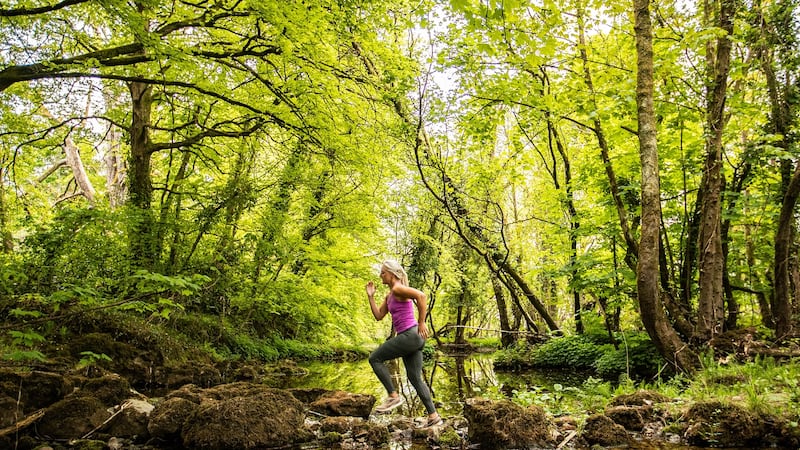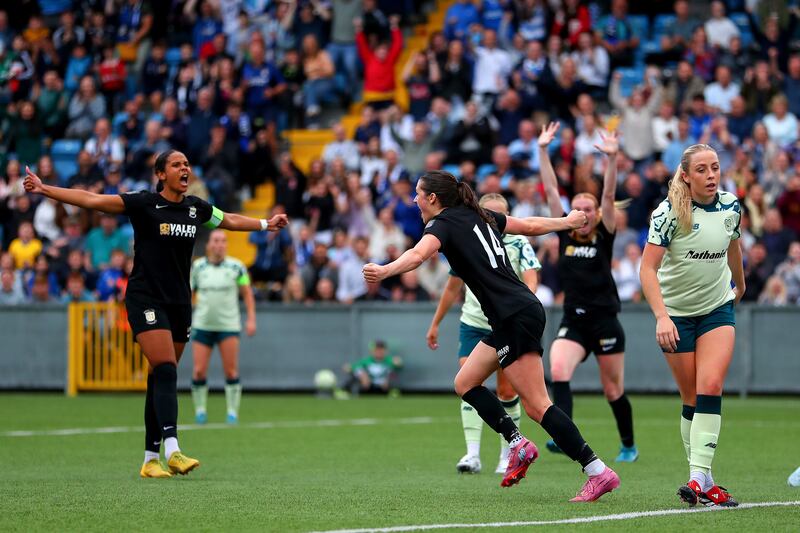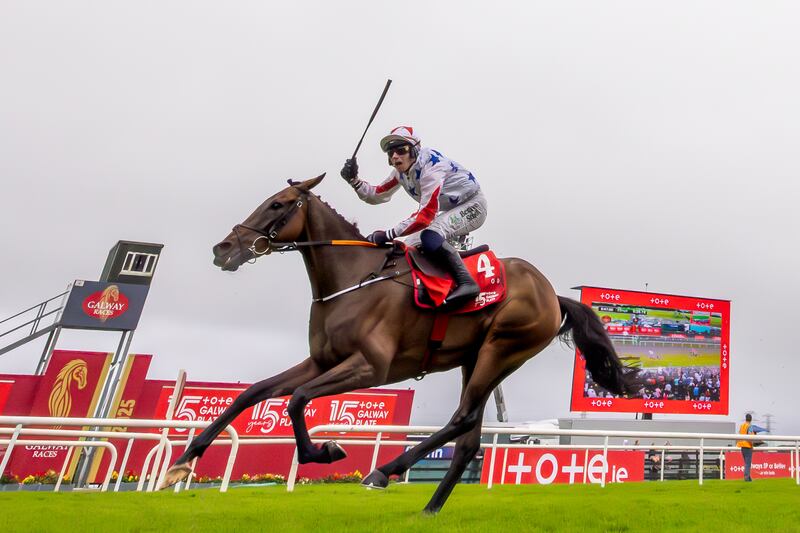In her first confession Sarah Lavin is down on her knees and praying for the Olympics to be postponed. Considering what brought her to that point it sounds a little selfish and also perfectly forgivable and Lavin doesn’t mind laying claim on both.
She’d missed out on Rio four years ago, her goal of continuing straight in the footsteps of sprint hurdler Derval O’Rourke ruined when Lavin allowed her perfectly athletic body to be quietly ravaged by over-training and under-eating, developing the frequently crippling condition known as relative energy deficiency in sport (RED-S).
So Tokyo 2020 was to be her time, the second chance to fulfil her childhood ambition, which is why shortly after her career took another cruel twist it felt like an Olympics in 2021 were an answered prayer.
They told me no way was I getting a CAT-scan, I needed to go for a pregnancy test. I found that so funny
It was June of 2016 when her body first gave in, a stress fracture in her foot - unquestionably caused by her own sins of the previous year – leaving her 16 weeks wearing a protective boot. With a 100m hurdles best of 13.23, set in 2014 at age 20, Lavin had always figured Rio was a natural progression. But she has some other confessions to make.
“If you’d asked me then, would I compete in Rio, I’d have said ‘of course I am’, those Olympics were my time,” she says. “I was so blissfully naive, in so many ways, and even though I’m not really one to get sucked into anything, I made some terrible mistakes, that really could have been prevented.
“The injury was 100 per cent related to poor nutrition, and even though I had a good team around me when it happened, in 2016, the damage was done the year before. The diet was ridiculous, so restrictive, so silly. Of course I would have read the stories, and would like to think of myself as reasonably intelligent.
“But when you get to a point where you just want it so bad, you can do without anything. I know that sounds so psychotic, but I wanted it so bad, too badly. At age 20, 21, you’re still young and impressionable. I wish I could change certain things, but at the same time the lessons I’ve learned, and struggled with in many ways, have taught me so much as a person, not just an athlete.”
Low weight
At the time she also consoled herself knowing she’d already turned a corner, working with Sport Ireland nutritionist Sharon Madigan to gradually build back up from the dangerously low weight of 57kg; after going 10 months without a menstrual cycle in 2015, she’d effectively “stopped working as a woman”.
She should have known better in other ways too: in her final year of physiotherapy studies at UCD, she’d sit in lectures and hear about some of the warning signs of RED-S and the potential for weakened bones and joints.
“I was so full-on in denial. For the first CAT-scan, on the stress fracture, they asked me when was my last period, and I said four, five months, whatever it was then. So they told me no way was I getting a CAT-scan, I needed to go for a pregnancy test. I found that so funny. I knew no way, no chance. But they wouldn’t go through with the scan until I had the pregnancy test. I can joke about it now, like when the scan came back, and they said ‘good news, you’re not pregnant’. And I said of course not.
As a younger athlete, you think seeking perfection is something that's admirable, whereas when you get older, you realise that's not always the case
“After that I just took ownership, because at the end of the day, no one else can feel what your own body feels. I can only laugh now, because I’d no idea how serious it had become, and how lucky I was to have such supportive family around me.
“Any sport, let’s face it, where girls are half-naked, if the body is on show, it’s going to have implications for body image. But I also love the sport for that, the athleticism, that you can remain feminine, but when you throw social media on top of that, you have to be able to identify the risks too.”
She also credits Noelle Morrissey for getting her back on track, her lifelong and increasingly ‘life’ coach at the Emerald Athletics Club in Limerick. Lavin was, by cosmic coincidence, born on the same day as O’Rourke, 13 years later: in 2013, her last as a junior, she also broke both O’Rourke’s Irish junior records, indoors and out, her 13.34 outdoors also earning her the silver medal at the European Juniors in Rieti, Italy.
She always was an extremely high-achiever and doesn’t mind laying claim to that either. She went straight from school in Limerick to the hallowed halls of the Ivy League, attending Princeton University in New Jersey for one term, before sensing that might impact in her athletic ambitions, so she started back in UCD.
“It was 2015 when I did the damage to myself. I came back from the European Championships in Zurich, my first as a senior, where I was dead last in my heat. Looking back it wasn’t bad, but someone said to me ‘what I can do to close the gap?’ I just said yeah, ‘cop on’, decided I wasn’t doing enough, but instead I just beat myself down that winter.”

Warning signs
It’s no secret that RED-S impacts on a lot of endurance sports, male and female, although at least women have some warning signs: still Lavin ignored them, careful too not to place any great blame on anyone but herself.
“You still read the stories, like with American distance runner Mary Cain, but I definitely wasn’t pressured like that. At the same time you’re surrounded by social media, the perfect athlete, and sometimes you can underestimate your own frailty. Especially when you’ve gone off to college, and don’t have the same guidance you had at home.
“But Mary Cain was bullied, and I would never say I was bullied. Over-sensitive, definitely. But better make those mistakes at 20, 21, than now. It’s a hard story to tell, but I think if more athletes can share some of the mistakes that they have made, there’s maybe less chance of them being repeated, especially the younger athletes.
“The high-achieving is still something I have to work on. Definitely, as a younger athlete, you think seeking perfection is something that’s admirable, whereas when you get older, you realise that’s not always the case. You have to adjust your goals, and it’s very rare the perfectionist goes to the highest level. They're catching themselves every time.”
Last summer suggested everything was back on track for Tokyo: she ran 13.26, her fastest time in five years, won a fifth National 100m title, and finished a close fourth at the World University Games in Naples. A few swift times in 2020 could easily push her inside the top 40 ranking required to make Tokyo.
Then in her first indoor race of the season in the Netherlands she gently misjudged her footing after crossing the line and pulling up on the banked curve that helps slow the sprinters down.
“A complete freak of an injury,” she says, “but a complete tear in the deltoid ligament (in the ankle), and two lateral ankle ligaments. The worst injury of my life, really. I just lost concentration for a split moment, frustrated after a poor start maybe, misplaced my spike and tore three ligaments.”
She decided against surgery, but was still facing a 12-week layoff and a proper race against time to get back for Tokyo. By then there was little mention of Covid-19 impacting on global sport or anything else in 2020. Slowly, then suddenly, that changed, the World Indoor Championships set for Nanjing one of the first global event to be postponed, before talk turned to the Olympics.
Little guilty
“Of course I was feeling a little guilty, but I was so grateful, I’d been praying for weeks, I’m not going to lie. I know it’s ruined some things for a lot of athletes, but for me it’s given me the year I needed, to turn things around again after the injury. There’s no need to rush things. Rankings are frozen until December 1st, so there’s nothing forced now.
“I know that’s completely selfish, and I’m very conscious too that my family have been healthy through all this, how lucky we are. It’s a cruel, cruel time for a lot of people, and I feel guilty even saying it. But I’d be lying if I said I wasn’t delighted when the Olympics were postponed.”
Her own practice in private physiotherapy has also been closed up since mid-March, and before the total lockdown she’d started treatment with esteemed local physical therapist Gerard Hartmann. She’s also setup a training area in the back garden of her parent’s house in Limerick, salvaging a section of the old track from the University of Limerick, after it was resurfaced in 2018.
“I’d only moved back home, after five years in Dublin, and here I was bringing this old running track into the house. It’s rough around the edges, but we needed a DIY project for the last few weeks, and it’s a nice place for lifting, doing circuits, and there’s great history to that track too.
“After the ankle injury, in February, I did question some things again, but I’ve been doing this sport since I was seven, and I wasn’t ready to quit yet, no way.”




















